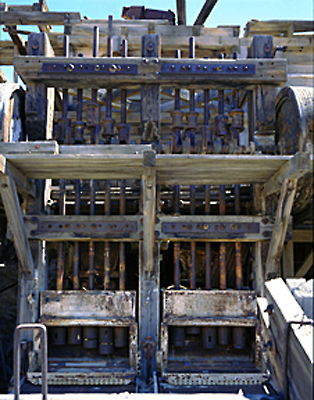 PURPOSE & PROCESS OF DOCUMENTATION
PURPOSE & PROCESS OF DOCUMENTATION
 PURPOSE & PROCESS OF DOCUMENTATION
PURPOSE & PROCESS OF DOCUMENTATION
The purpose of documentation
is to collect a variety of detailed information about a resource
based on it's physical shape, material remains, and cultural relevance
in order to understand it. Ultimately, documentation gathers the
evidence required to interpret a resource's significance on a
number of levels. Different methods of documentation reveal different
kinds of information, and the methods applied depend on the resource
itself, the purpose and focus of the documentation project, and
the data sources available. Industrial sites, for example, often
have significant above ground remains such as structures, machinery,
and artifact scatters that can be easily measured, drawn, mapped,
photographed, and described. Written historic records and even
oral histories gathered from community members often exist. When
possible or necessary, archaeology can be used to reveal unseen
material evidence that goes beyond historic records and memories.
On the most basic level, a documentation project defines what
remains as well as what is missing. On a larger level, these projects
inform academic research, produce a cultural / historic record,
and give an agency such as the National Park Service the information
needed to assess, preserve, and present the resource. HAER documentation follows a standard
procedure with definitive guidelines that call for three methods
of documentation to be applied to any given site. The products
of this procedure are geared toward fulfilling HAER's mandate
to specifically document engineering and industrial structures.
Identifying technological processes and equipment, structural
components, building materials, and spatial relationships between
features is the main objective of HAER's photographic and architectural
drawing components. The third component is conducting documentary
research to establish specific site and contextual historical
explanations of the engineering project or industry at hand. Very
rarely does HAER use archaeological excavation as part of its
methodology, primarily due to time and funding constraints.
Detail of two stamp batteries at Skidoo (HAER photographs by G. Archimede)